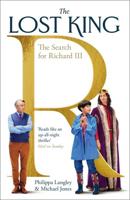Publisher's Synopsis
The Anglo-Saxon cemeteries at Mucking, Essex, represent the burials of over 800 individuals from the 5th to early 7th centuries. This long-awaited report includes detailed illustrated catalogues in Part i, and comprehensive analysis and discussion of the burials, their relation to the excavated settlement evidence and wider context, in Part ii. The mixed rite Cemetery II is one of the largest and most complete Anglo-Saxon cemeteries yet excavated (282 inhumation burials, 463 cremation burials), while the partly destroyed Cemetery I included further significant inhumations. The quality and quantity of the evidence from graves of the first half of the 5th century, with cultural affinities primarily with the Elbe-Weser area, is unsurpassed. By the later 5th and the 6th century the cemetery was primarily 'Saxon' in character, but with some Anglian and eastern Kentish influences; Frankish (and in one case Alamannic) artefacts were also found. The dating is based on seriation analysis of the inhumation artefact assemblages and is combined with an innovative maximisation of demographic data from soil silhouettes and important evidence for coffin structure and costume. Mucking can now be seen as a particularly extensive Anglo-Saxon settlement, of at least 100+ individuals, commanding an important strategic position in the Lower Thames region; it may have functioned as a meeting place and mart for surrounding areas on both sides of the Thames.









